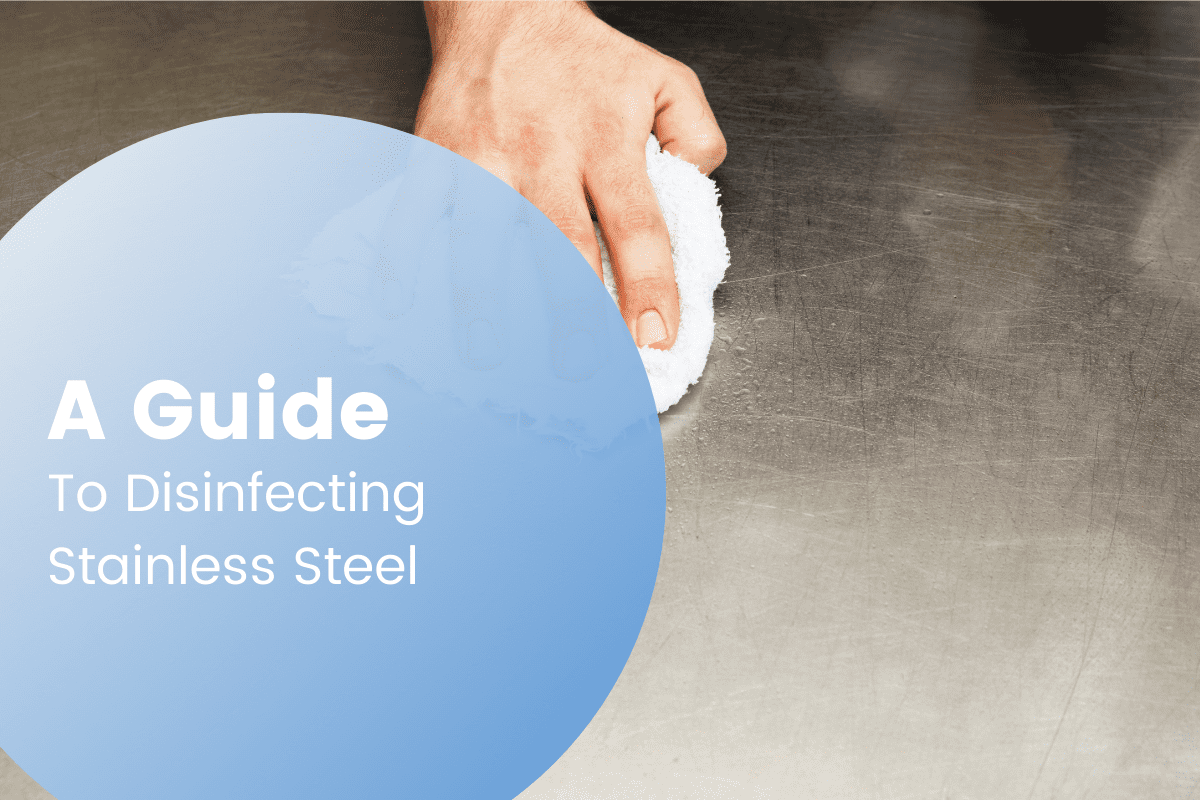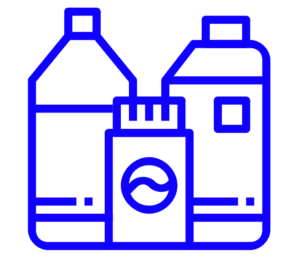
Medical communities around the globe are more preoccupied than ever with disinfecting equipment. COVID-19 is changing the conversation about how we clean, not only in medical facilities but also at home and throughout our communities. With stainless steel being the preferred material by the medical community, it is imperative that we understand how to properly sanitize stainless steel equipment. Lakeside manufactures a wide variety of stainless steel medical carts, shelves and accessories and we’ve put together a guide on how to accomplish this.
Selecting a Disinfectant

According to a study from the National Institute of Health, the virus that causes COVID-19 was detectable on up to three days on stainless steel products. Therefore, verifying that the correct product is being used to disinfect surfaces is paramount. The Environment Protection Agency created a list of disinfectants that are effective against COVID-19.
While bleach should generally be avoided for cleaning stainless steel products, common products such as Lysol Spray or Lysol Wipes can be used on stainless steel. If you decide to use a product of this type, it is extremely important that you rinse the surface thoroughly with fresh water. Lysol and similar products can be abrasive to stainless steel if the substance is on the surface of the stainless steel for an extended period.
Using the Right Tools
 Prior to cleaning and disinfecting any surface, it is imperative to use Personal Protective Equipment (PPE). There are four major types of PPE including face shields, gloves, goggles, and gowns. At minimum gloves and eye protection should be used before cleaning any potentially contaminated surface.
Prior to cleaning and disinfecting any surface, it is imperative to use Personal Protective Equipment (PPE). There are four major types of PPE including face shields, gloves, goggles, and gowns. At minimum gloves and eye protection should be used before cleaning any potentially contaminated surface.
 Certain cleaning utensils like steel wool or other steel brushes are too abrasive for stainless steel. These types of tools can contain iron particles. When used to clean stainless steel, they can leave metal particles on the surface and lead to rust formation. A soft cloth, gentle brushes, or sponges are much better alternatives.
Certain cleaning utensils like steel wool or other steel brushes are too abrasive for stainless steel. These types of tools can contain iron particles. When used to clean stainless steel, they can leave metal particles on the surface and lead to rust formation. A soft cloth, gentle brushes, or sponges are much better alternatives.
The Cleaning Process
 To effectively sanitize a stainless steel surface, it is recommended to begin by using hot soap and water. Using your towel, you can then begin to use any additional cleaning solutions. Always rub in the direction of the steel grain for maximum effectiveness and to avoid scratching the surface.
To effectively sanitize a stainless steel surface, it is recommended to begin by using hot soap and water. Using your towel, you can then begin to use any additional cleaning solutions. Always rub in the direction of the steel grain for maximum effectiveness and to avoid scratching the surface.
After all disinfectants are applied, rinse the surface thoroughly with fresh, warm water. Always remember to completely wipe the surface dry. This process should be repeated after every disinfecting operation. As always – and especially during the COVID-19 pandemic – frequent cleaning is strongly recommended.
Lakeside Manufacturing is committed to supporting medical facilities with rapid manufacturing and lead times. Our facility remains open and operational under the essential business provisions granted by local and federal guidelines. Lakeside is prepared to support increased demand of stainless steel products and remains dedicated to providing quality healthcare solutions. For more information about the stainless steel carts we have available, please review our Healthcare Catalog.
Lakeside Has You Covered
Check out our COVID-19 resources page and product solutions pages for helpful, informative, and up to date information relevant to the pandemic in real time.


